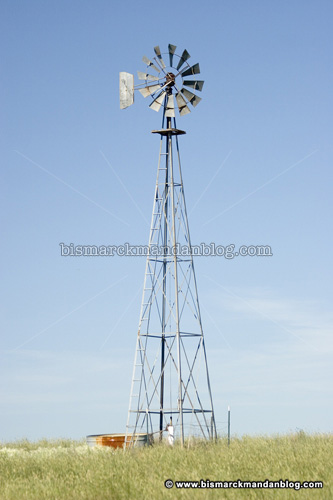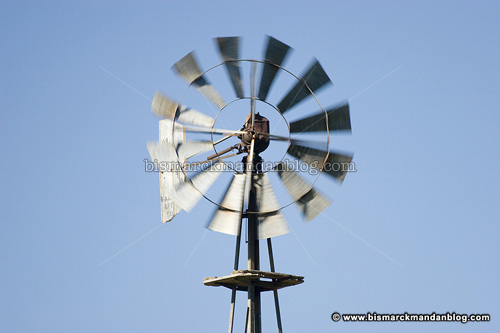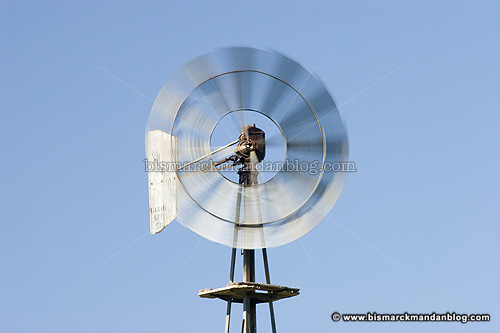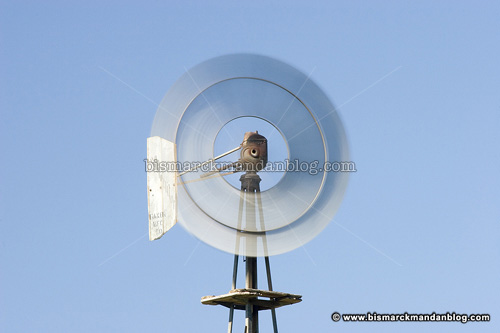I’ve said it repeatedly on this blog: I’m a novice when it comes to photography. I’m trying to learn, however, and that’s half the fun. There are a few things I’ve learned since the day I marched into Bob’s Photo and threw down for my trusty Canon digital camera:
1- Photography is all about the moment. Capturing a photo of something boring with technical perfection and artistic genius produces a perfectly boring photo.
2- As soon as you have more than one lens in your arsenal, you almost always have the wrong one on the camera at any given moment!
3- The only way to get a nice portfolio of decent pictures is to sink a pantload of time into chasing them.
There are others, but those simple truths should be sufficient for now. But let’s talk about another lesson: shutter speed. I decided to try for some different effects on this windmill, located in a field east of Bismarck:




By watching the meter in my viewfinder and adjusting accordingly, I was able to keep these photos consistent for exposure and color, only affecting the way the motion of the blades was captured.
One pitfall of a narrow aperture (high f-stop number) with a digital SLR camera is that it begins to reveal the inevitable dust on the camera’s sensor. I had to do a fair bit of spot removal to the last two photos as a result. Dust casts shadows on the sensor, but when the aperture is open wider, light gets around the dust. When the aperture starts to limit the light, the shadows get bigger and are seen by the sensor. That’s where Photoshop and a cleaning kit come in handy!
I hope you enjoyed this exercise. If you have any sort of camera that allows you manual control, and have a decent tripod, I encourage you to play around with this sort of thing. Learning photography is fun, and Bismarck-Mandan is full of interesting subject matter with which to expand your skills!
